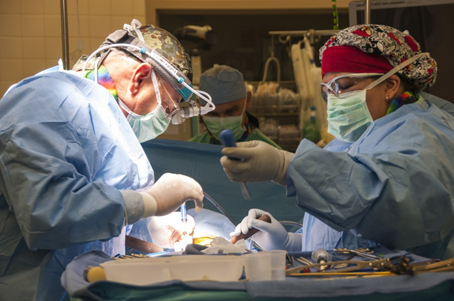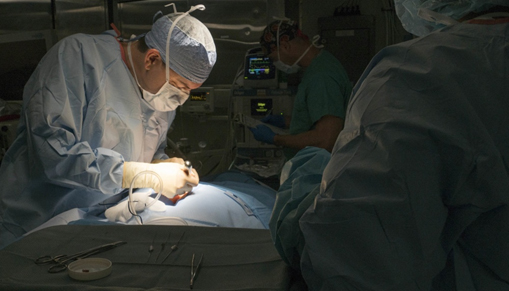Combat-related blast and penetrating craniofacial injuries pose unique medical challenges, and their surgical management can dramatically alter Service members' cosmetic and functional outcomes. Initial surgical procedures largely focus on wound cleaning and closure, and sometimes involve relieving pressure on the brain by removing part of the skull (decompressive craniectomy). Patients often suffer from debilitating physical, sensorimotor, and cognitive impairments until reconstructive surgery can be performed to replace the missing part of the skull. Currently, there is no standard window of time between initial decompressive craniectomy and reconstructive procedures.
A recent publication1 by Dr. Priya Jeyaraj of the Division of Oral and Maxillofacial Surgery at the Military Dental Centre in Secunderabad, India, proposes an algorithm to optimize the management of these injuries from the pre-hospital to rehabilitative care settings. She supports her proposal by highlighting four case studies of combat-related injuries requiring removal of part of the skull. These cases featured different injury mechanisms sustained at varying timepoints before case study reporting: three were gunshot wounds and one was blunt impact trauma from an exploding mine. Each patient received emergency care and decompressive craniectomy. Embedded projectile fragments were excised only when indicated to be clinically beneficial, as removal of deeply penetrating objects may pose further risk to the structural integrity of the brain. In addition to significant physical deformities, patients experienced sensorimotor and cognitive defects, such as muscle weakness and memory loss. Following skull reconstruction with either the patients' own bones or implanted materials such as surgical-grade plastics or titanium mesh grafts (cranioplasty), the patients quickly regained sensorimotor and cognitive function, as well as restoration of their physical appearances.
This publication provides evidence for the modification of clinical management protocols to shorten the time between craniectomy and cranioplasty to best treat and rehabilitate Service members. Dr. Jeyaraj's work emphasizes the importance of skull reconstruction with respect to both the aesthetic and functional aspects of recovery from complex combat-related injuries, and advocates for cranioplasty to be performed no more than three months following craniectomy, as the risks of infection and bone flap deterioration are known to increase over time.


1 Jeyaraj, P.
"Cranial Vault Defects and Deformities Resulting from Combat-Related Gunshot, Blast and Splinter Injuries: How Best to Deal with Them."
J. Maxillofac. Oral Surg. 19, 184–207 (2020).
https://doi.org/10.1007/s12663-019-01258-1
Your 15 minute session will timeout in approximately 10 minutes.
If you're in the middle of entering information, please close this warning and save your progress (if possible) or finish up your task.
If your session fully times out, you will lose any un-saved work.
Your current Blast Injury Research Program session has expired.
Your next click will take you away from the private area, and you will lose any work you have in-progress.
Please enter your email address, and try again.